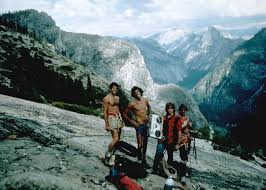Exploring Yosemite National Park: A Must-Visit Destination

The Importance of Yosemite National Park
Yosemite National Park, located in California’s Sierra Nevada, has long been a hallmark of natural beauty and conservation efforts in the United States. Designated as a National Park in 1890, it is renowned for its spectacular granite cliffs, waterfalls, and diverse ecosystems. This iconic park attracts millions of visitors each year, making it a pivotal site for environmental education and preservation.
Recent Developments and Events
In recent news, Yosemite National Park has faced both challenges and successes in the face of climate change and increased tourism. In 2023, the National Park Service (NPS) implemented new regulations aimed at reducing human impact on the park’s ecosystems. These measures include limiting the number of vehicles during peak seasons, introducing shuttle services, and promoting sustainable hiking practices.
In June 2023, a wildfire near the park raised concerns about its ecological balance. Fortunately, quick action from firefighters and favorable weather conditions mitigated any long-term damage, but it highlighted the ongoing threat that climate change poses to such natural wonders. Local authorities have been increasingly focused on enhancing fire preparedness and public safety.
The Role of Conservation Efforts
Conservationist groups have also been pivotal in maintaining Yosemite’s pristine environment. Organizations like the Yosemite Conservancy work diligently to fund restoration projects, trail maintenance, and educational programs aimed at fostering a deeper understanding of the park’s natural resources.
In addition, recent collaborations between the NPS and various environmental agencies emphasize the importance of scientific research and monitoring critical species within the park, such as the black bear and the Sierra Nevada bighorn sheep.
Conclusion and Future Prospects
As Yosemite National Park continues to be a sanctuary for nature lovers, the balance between preserving its natural beauty and accommodating the influx of visitors remains a pressing issue. Looking ahead, ongoing conservation efforts and adaptive management strategies will be crucial in ensuring that future generations can enjoy the park’s breathtaking landscapes and rich biodiversity.
For readers, planning a visit to Yosemite offers not just a recreational opportunity, but a chance to engage with vital conservation efforts. Whether hiking, camping, or simply taking in the views, embracing sustainable practices will ensure that this treasured national park remains a vibrant part of America’s natural heritage.









